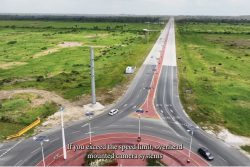Dear Editor,
Please be good enough to accommodate this response to the letter in SN of Tuesday June 28, titled `Worker participation in decision-making remains relevant today’. Immediately one must affirm agreement with this perspective. At the same time however, those who are more informed would not support the assertion contained in the following extract: “GuySuCo’s housekeeping matters aside, care should be taken when assessing success or no success in respect to the model of participation and control lest we succumb to the false notion that the model of participation and control failed when in fact, it was never really tried in Guyana and thus the question why go back to a model that failed?
“Truth be told, Guyana’s past experiences on the subject of workers’ participation and control proved unworthy, but that was because there was no genuine effort by the Burnham administration to put even the slightest modicum of the concept in place either at the Bauxite or sugar industries”.
On specific behalf of the sugar industry, the undersigned (and surviving colleagues) can vouch for the inaccuracy of the above assertion. There simply can be no argument about the formal introduction of Worker Participation on the nationalisation of the sugar industry in 1976, based on a very detailed report emerging from a Personnel Managers’ Conference of the Guyana Sugar Corporation. It was headed: “Constitution for Worker Participation in the Guyana Sugar Corporation”. Extracted from any copy of the 10 page document are the following features that were addressed:
A. Objectives
B. Structure
Departmental Levels: Workers Councils: Field, Factory and Administration Areas of Discussion
. Composition of Department Workers’ Council
. Office Bearers
. Termination of Membership
. Filling of Vacancies
. Agenda
. Elections
Then there was the Estate Workers’ Council consisting of Management and Worker Representatives of Departmental Councils. The latter were to serve for two years, and were re-electable. There was also an Elected Workers’ Assembly on each estate comprising of the non-managerial workers elected to the three Departmental Workers’ Council, the agenda for which is detailed in the aforementioned document, which deliberately also makes reference to: Trade Union Rights and Privileges. Finally careful attention was given to the Elections Procedures to the Departmental Councils (including the use of ballot boxes). A copy of this historic document can be made available.
The undersigned can attest to the fact that all the provisions were insistently observed during his respective tenures at the Corporation. It is for the intervening Administrations to confess their adherence or otherwise to the ‘Relevance’ spoken of. It would have been useful to learn of the position of information to which the commentator had access on which to base the earlier allegations.
Sincerely,
E.B. John
Retired Human Resources Director
GuySuCo







